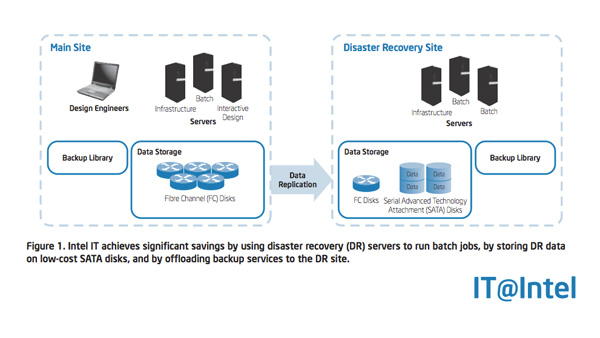IT Best Practices: Establishing a Low Cost Disaster Recovery Site

IT Best Practices: Intel IT developed a cost-effective disaster recovery (DR) strategy for one of our data centers in Israel that has a potential business value of more than USD 3 million. During its first disaster recovery drill, the new site performed at nearly 100 percent.
DR sites are often perceived as a very expensive insurance policy—but we have found ways to make DR more affordable. As part of a microprocessor design project, we built a site that protected thousands of servers and hundreds of Terabytes of data. To optimize capital investments, we designed our solution to avoid idle compute servers, use a tiered storage system, and offload backup from the main data center.
In our first total-loss disaster drill, we succeeded in bringing up 95 percent of services, according to their respective recovery point objectives (RPOs). When not in a disaster scenario, we are maximizing the value of our DR computing assets through high utilization rates.
For more information on Intel IT Best Practices, please visit intel.com/IT
Posted in:
Corporate, Information Technology, Intel, Intel IT, IT@Intel

